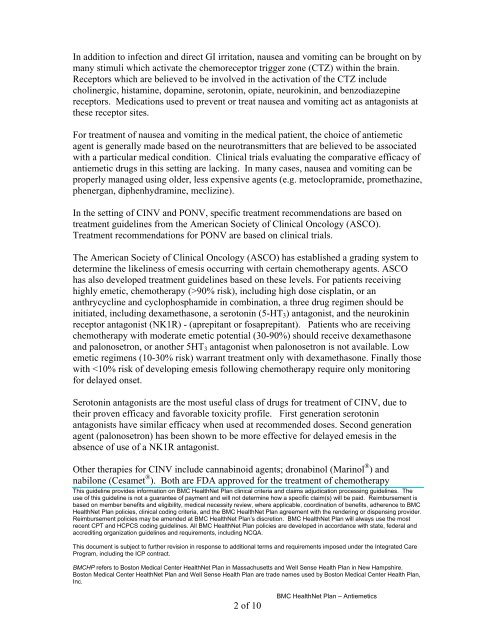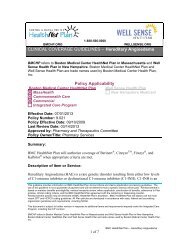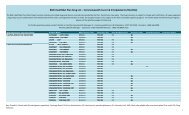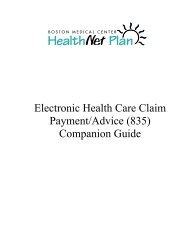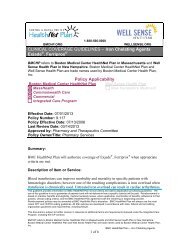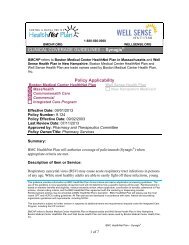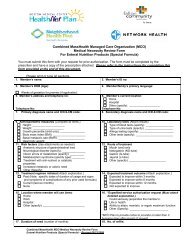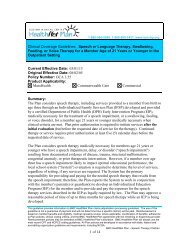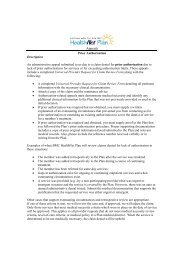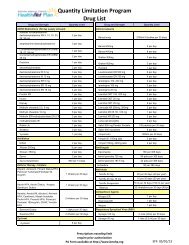Antiemetics - BMC HealthNet Plan
Antiemetics - BMC HealthNet Plan
Antiemetics - BMC HealthNet Plan
You also want an ePaper? Increase the reach of your titles
YUMPU automatically turns print PDFs into web optimized ePapers that Google loves.
In addition to infection and direct GI irritation, nausea and vomiting can be brought on bymany stimuli which activate the chemoreceptor trigger zone (CTZ) within the brain.Receptors which are believed to be involved in the activation of the CTZ includecholinergic, histamine, dopamine, serotonin, opiate, neurokinin, and benzodiazepinereceptors. Medications used to prevent or treat nausea and vomiting act as antagonists atthese receptor sites.For treatment of nausea and vomiting in the medical patient, the choice of antiemeticagent is generally made based on the neurotransmitters that are believed to be associatedwith a particular medical condition. Clinical trials evaluating the comparative efficacy ofantiemetic drugs in this setting are lacking. In many cases, nausea and vomiting can beproperly managed using older, less expensive agents (e.g. metoclopramide, promethazine,phenergan, diphenhydramine, meclizine).In the setting of CINV and PONV, specific treatment recommendations are based ontreatment guidelines from the American Society of Clinical Oncology (ASCO).Treatment recommendations for PONV are based on clinical trials.The American Society of Clinical Oncology (ASCO) has established a grading system todetermine the likeliness of emesis occurring with certain chemotherapy agents. ASCOhas also developed treatment guidelines based on these levels. For patients receivinghighly emetic, chemotherapy (>90% risk), including high dose cisplatin, or ananthrycycline and cyclophosphamide in combination, a three drug regimen should beinitiated, including dexamethasone, a serotonin (5-HT 3 ) antagonist, and the neurokininreceptor antagonist (NK1R) - (aprepitant or fosaprepitant). Patients who are receivingchemotherapy with moderate emetic potential (30-90%) should receive dexamethasoneand palonosetron, or another 5HT 3 antagonist when palonosetron is not available. Lowemetic regimens (10-30% risk) warrant treatment only with dexamethasone. Finally thosewith


